 W
WHenrietta Vansittart, née Lowe was an English engineer and inventor, awarded a patent for a screw propeller called the Lowe-Vansittart propeller. She was self-trained and she is considered to be one of the first female engineers, with her concentration being on ship propulsion.
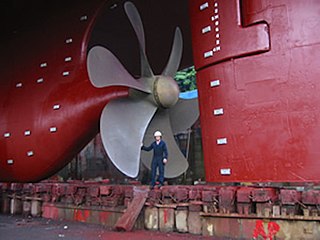 W
WA propeller is a device with a rotating hub and radiating blades that are set at a pitch to form a helical spiral, that, when rotated, performs an action which is similar to Archimedes' screw. It transforms rotational power into linear thrust by acting upon a working fluid, such as water or air. The rotational motion of the blades is converted into thrust by creating a pressure difference between the two surfaces. A given mass of working fluid is accelerated in one direction and the craft moves in the opposite direction. Propeller dynamics, like those of aircraft wings, can be modelled by Bernoulli's principle and Newton's third law. Most marine propellers are screw propellers with helical blades rotating on a propeller shaft with an approximately horizontal axis.
 W
WIn aeronautics, a propeller, also called an airscrew, converts rotary motion from an engine or other power source into a swirling slipstream which pushes the propeller forwards or backwards. It comprises a rotating power-driven hub, to which are attached several radial airfoil-section blades such that the whole assembly rotates about a longitudinal axis. The blade pitch may be fixed, manually variable to a few set positions, or of the automatically variable "constant-speed" type.
 W
WIn aeronautics, a propeller, also called an airscrew, converts rotary motion from an engine or other power source into a swirling slipstream which pushes the propeller forwards or backwards. It comprises a rotating power-driven hub, to which are attached several radial airfoil-section blades such that the whole assembly rotates about a longitudinal axis. The blade pitch may be fixed, manually variable to a few set positions, or of the automatically variable "constant-speed" type.
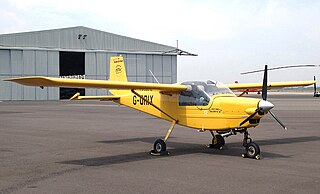 W
WArplast Helice is a former French manufacturer of propellers for light aircraft and microlights. The company was based at Gargas, France. The company appears to have been wound up on 29 April 2015.
 W
WA blade grinder, also known as propeller grinder, is a machine that chops material while mixing it, by means of a high-speed spinning blade. Applications of blade grinders for preparing foods include numerous electric kitchen appliances such as blenders, food processors, some garbage disposals, and some coffee grinders. The terms "blade grinder" and "propeller grinder" are in popular use to distinguish the blade grinder type of coffee grinder from other types. Other consumer applications include rotary lawn mowers.
 W
WManoeuvring thruster is a transversal propulsion device built into, or mounted to, either the bow or stern, of a ship or boat to make it more manoeuvrable. Bow thrusters make docking easier, since they allow the captain to turn the vessel to port or starboard side, without using the main propulsion mechanism which requires some forward motion for turning; The effectiveness of a thruster is curtailed by any forward motion due to the Coandă effect. A stern thruster is of the same principle, fitted at the stern. Large ships might have multiple bow thrusters and stern thrusters.
 W
WA constant-speed propeller is a variable-pitch aircraft propeller that automatically changes its blade pitch in order to maintain a chosen rotational speed. The power delivered is proportional to the arithmetic product of rotational speed and torque, and the propeller operation places emphasis on torque. The operation better suits modern engines, particularly supercharged and gas turbine types.
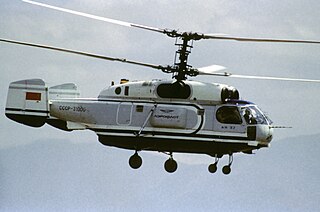 W
WContra-rotating, also referred to as coaxial contra-rotating, is a technique whereby parts of a mechanism rotate in opposite directions about a common axis, usually to minimise the effect of torque. Examples include some aircraft propellers, resulting in the maximum power of a single piston or turboprop engine to drive two propellers in opposite rotation. Contra-rotating propellers are also common in some marine transmission systems, in particular for large speed boats with planing hulls. Two propellers are arranged one behind the other, and power is transferred from the engine via planetary gear transmission. The configuration can also be used in helicopter designs termed coaxial rotors, where similar issues and principles of torque apply.
 W
WAircraft equipped with contra-rotating propellers, also referred to as CRP, coaxial contra-rotating propellers, or high-speed propellers, apply the maximum power of usually a single piston or turboprop engine to drive two coaxial propellers in contra-rotation. Two propellers are arranged one behind the other, and power is transferred from the engine via a planetary gear or spur gear transmission. Contra-rotating propellers are also known as counter-rotating propellers, although counter-rotating propellers is much more widely used when referring to airscrews on separate shafts turning in opposite directions.
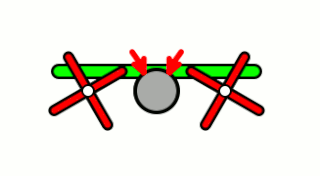 W
WCounter-rotating propellers, also referred to as CRP, are propellers which spin in opposite directions to each other. They are used on some twin- and multi-engine propeller-driven aircraft.
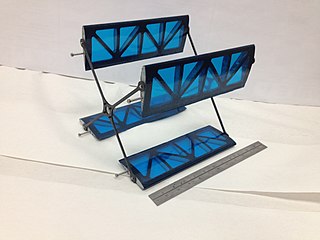 W
WA cyclorotor, cycloidal rotor, cycloidal propeller or cyclogiro, is a fluid propulsion device that converts shaft power into the acceleration of a fluid using a rotating axis perpendicular to the direction of fluid motion. It uses several blades with a spanwise axis parallel to the axis of rotation and perpendicular to the direction of fluid motion. These blades are cyclically pitched twice per revolution to produce force in any direction normal to the axis of rotation. Cyclorotors are used for propulsion, lift, and control on air and water vehicles. An aircraft using cyclorotors as the primary source of lift, propulsion, and control is known as a cyclogyro or cyclocopter. The patented application, used on ships with particular actuation mechanisms both mechanical or hydraulic, are named after the name of the German company Voith Turbo GMBH that produces them: Voith–Schneider cycloidal propellers.
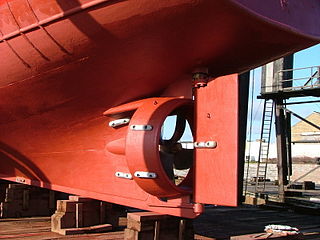 W
WA ducted propeller, also known as a Kort nozzle, is a marine propeller fitted with a non-rotating nozzle. It is used to improve the efficiency of the propeller and is especially used on heavily loaded propellers or propellers with limited diameter. It was developed first by Luigi Stipa (1931) and later by Ludwig Kort (1934). The Kort nozzle is a shrouded propeller assembly for marine propulsion. The cross-section of the shroud has the form of a foil, and the shroud can offer hydrodynamic advantages over bare propellers, under certain conditions.
 W
WA folding propeller is a type of propeller whose blades automatically fold out when the engine is turning, and then fold back when the engine stops. Folding propellers are found on sailing yachts, on model airplanes, and increasingly on self-launching gliders and small motor gliders, such as the Aériane Swift PAS. Their purpose of folding propellers is to reduce drag when sailing or soaring, respectively.
 W
WA ground-adjustable propeller is a simple type of aircraft variable-pitch propeller where the blade angle can be adjusted between pre-set limits of fine and coarse pitch. As its name implies, a ground-adjustable propeller may be adjusted only when the aircraft is on the ground and when the engine is not running. To adjust the propeller, the blades are loosened in the hub, a new angle set and then the hub tightened.
 W
WThe Kitchen rudder is the familiar name for "Kitchen's Patent Reversing Rudders", a combination rudder and directional propulsion delivery system for relatively slow speed displacement boats which was invented in the early 20th century by John G. A. Kitchen of Lancashire, England. It turns the rudder into a directional thruster, and allows the engine to maintain constant revolutions and direction of drive shaft rotation while altering thrust by use of a control which directs thrust forward or aft. Only the rudder pivots; the propeller itself is on a fixed shaft and does not.
 W
WA propeller is a device with a rotating hub and radiating blades that are set at a pitch to form a helical spiral, that, when rotated, performs an action which is similar to Archimedes' screw. It transforms rotational power into linear thrust by acting upon a working fluid, such as water or air. The rotational motion of the blades is converted into thrust by creating a pressure difference between the two surfaces. A given mass of working fluid is accelerated in one direction and the craft moves in the opposite direction. Propeller dynamics, like those of aircraft wings, can be modelled by Bernoulli's principle and Newton's third law. Most marine propellers are screw propellers with helical blades rotating on a propeller shaft with an approximately horizontal axis.
 W
WUnlike a standard one-piece boat or aircraft propeller, a modular propeller is made up of using a number of replaceable parts, typically:a set of matched blades; a propeller hub; and an end cap to retain the blades and to secure the propeller as a solid unit.
 W
WThe Pleuger rudder is a power assisted ship's rudder. It creates a flow of water in the direction the rudder points powered by an auxiliary electric motor. This aids maneuverability at low speeds greatly, since it operates on a similar principle to a thruster.
 W
WA propeller governor or constant-speed unit (CSU) changes the blade pitch angle of a aircraft propeller to maintain a selected engine RPM regardless of the operational conditions of the aircraft.
 W
WA propeller speed reduction unit is a gearbox or a belt and pulley device used to reduce the output revolutions per minute (rpm) from the higher input rpm of the powerplant. This allows the use of small displacement internal combustion engines to turn aircraft propellers within an efficient speed range.
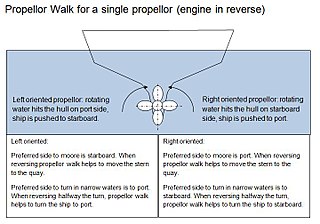 W
WPropeller walk is the term for a propeller's tendency to rotate about its vertical axis. The rotation is in addition to the forward or backward acceleration.
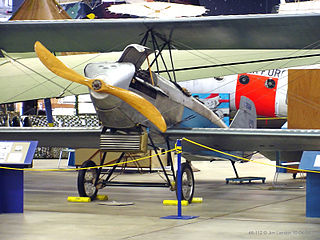 W
WA scimitar propeller is shaped like a scimitar sword, with increasing sweep along the leading edge. Typically scimitar propellers are constructed of lightweight or composite materials. In the early 1900s, as established by the French aeronautical inventor Lucien Chauvière and his commercial success with his scimitar-shaped Integrale propeller design, they were made of laminated wood. The combination of light weight and efficient aerodynamics results in more power and reduced noise.
 W
WA single-blade propeller may be used on aircraft to generate thrust. Normally propellers are multiblades but the simplicity of a single-blade propeller fits well on motorized gliders, because it permits the design of a smaller aperture of the glider fuselage for retraction of the powerplant. The counterbalanced teetering mono-blade propeller generates fewer vibrations than conventional multiblade configurations. Often, single blade propeller configurations are touted as having a much greater efficiency than multiblade propellers, but this is a falsehood outside the inertial losses in spinning a heavier propeller, and the minimal additional drag from added blades. Single bladed propellers are principally used to fulfill engineering requirements that fall outside the scope of efficiency.
 W
WA spinner is an aircraft component, a streamlined fairing fitted over a propeller hub or at the centre of a turbofan engine. Spinners both make the aircraft overall more streamlined, reducing aerodynamic drag and also smooth the airflow so that it enters the air intakes more efficiently. Spinners also fulfill an aesthetic role on some aircraft designs.
 W
WA sterndrive or inboard/outboard drive (I/O) is a form of marine propulsion which combines inboard power with outboard drive. The engine sits just forward of the transom while the drive unit lies outside the hull.
 W
WThe supercavitating propeller is a variant of a propeller for propulsion in water, where supercavitation is actively employed to gain increased speed by reducing friction. They are being used for military purposes and for high performance racing boats as well as model racing boats.
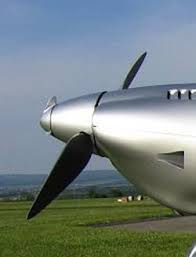 W
WThe V-Prop is an automatic self-powering electronic variable-pitch propeller developed by Silence Aircraft, the manufacturers of the Silence Twister single-seat elliptical-winged kitplane.
 W
WThe Voith Schneider propeller (VSP), also known as a cycloidal drive is a specialized marine propulsion system (MPS). It is highly maneuverable, being able to change the direction of its thrust almost instantaneously. It is widely used on tugs and ferries.